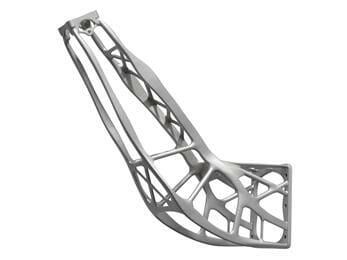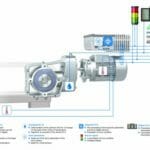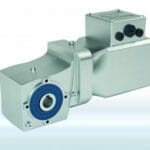|
Weight reduction in parts is a major objective for the aerospace and automotive industries |
| Munich, Germany – November 13, 2019 – Global technology Group Oerlikon, with vast expertise in materials, has entered into an additive manufacturing (AM) research alliance with Linde, the world’s largest industrial gases company, and the Technical University of Munich (TUM), one of the leading German universities in engineering. The partners aim to develop new high-strength, lightweight aluminum-based alloys that can serve the safety and weight reduction needs of the aerospace and automotive industries. The Bavarian Ministry of Economic Affairs is funding 50% of the EUR 1.7 million research project.
This research partnership was born out of the additive manufacturing collaborative announced in early October. TUM, Oerlikon, GE Additive and Linde announced the establishment of a Bavarian additive manufacturing cluster and an Additive Manufacturing Institute to promote higher levels of collaboration and cross-disciplinary research amongst the companies and the university. Having a wide variety of expertise in one geography is expected to accelerate advances in additive manufacturing. The Oerlikon – Linde – TUM consortium is unique as each of the three members brings its own high-tech expertise to the table in this complex space. Producing the optimum aluminum alloy with a high content of lightweight elements like magnesium through an AM process requires a deep understanding of chemistry, thermo- and fluid dynamics. During the manufacturing process, the metal powder is applied one layer at a time on a build plate and melted using a laser beam. This fuses the metal powder together and forms the desired complex, three-dimensional geometries. The process takes place in a well-defined shielding gas atmosphere. Oerlikon’s expertise in powder and material science will contribute to the development of the novel material. “Using our proprietary software, which enables big data simulation and analysis, Scoperta-RAD, Oerlikon provides critical solutions for the development of new materials and performance optimization of available materials,” says Dr. Alper Evirgen, Metallurgist at Oerlikon AM. “There are significant challenges during the additive manufacturing of aluminum alloys because the temperatures reached in the melt pool create an extreme environment that leads to evaporation losses of alloying elements that have comparatively low boiling temperatures – such as magnesium,” adds Dr. Marcus Giglmaier, Project Manager, AM Institute and Research Funding Manager. “Additionally, the cooling rates of more than 1 million °C per second, create high stresses during the solidification process, which can cause micro cracks in the solid material.” Linde’s pioneering technology and its unrivalled expertise in gas atmosphere control and evaporation suppression during the AM process – including the processing of aluminum-based alloys – overcomes impurities within the print chamber, helping manufacturers to achieve optimal printing conditions. “Characterizing and controlling the gas process during AM not only has the potential to prevent evaporation losses, but also to accelerate the entire printing process,” explains Thomas Ammann, Expert Additive Manufacturing at Linde. “Using a tailor-made gas chemistry for the new alloy would help to control the processes occurring in the melt pool and minimize the compositional changes of the alloys, as well as preventing cracking during printing.” For its part, the Institute of Aerodynamics and Fluid Mechanics (AER) at TUM has a detailed understanding of the physical phenomena taking place during the additive manufacturing process using numerical simulations. “The AM research alliance bridges the gap between our latest numerical modeling achievements and future industrial applications,” says Prof. Nikolaus Adams, Director of the AER. At AER, a process simulation tool has been developed to cover the whole melt pool dynamics – from solid to liquid and gas with phase change models, surface-tension effects and thermal transport. “A detailed insight into the simultaneously occurring thermo-fluid dynamic phenomena is crucial in gaining a better understanding of the entire process and the final material characteristics,” adds Dr. Stefan Adami on the benefits of computational fluid dynamics. Visit us at Formnext in Frankfurt am Main, November 19-22, 2019, to learn more about our partnership and capabilities. Oerlikon AM: Hall 12.1, Booth B01. Linde: Hall 12.0, Booth C141. TUM: Hall 11.1, Booth C61. |








